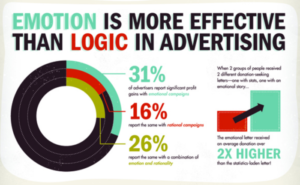Introduction
Online shopping has surged in recent years and has changed from just a novelty into a multi-trillion-dollar industry. Have you heard about the fact that global e-commerce sales increased by $4 trillion in 2020, and this number is increasing exponentially? This jaw-dropping statistic shows just how important online shopping has become in our lives.
But here the question arises in our mind, why has online shopping grown so rapidly? And what makes consumers click ‘Add to Cart’ with such frequency? It is very important to Understand the psychology behind online shopping. if you are interested in e-commerce then you should know consumer behavior as well as simply get to know the digital marketplace more mindfully. In this blog, we will explore these questions. we will also know about the psychological triggers that influence online shopping behavior and examine the trends shaping the industry.
The Growth of Online Shopping
We know that The concept of online shopping is not new at all. The rapid rise to dominance is probably a recent phenomenon. We see that the roots of e-commerce can be traced back to the 1990s when the first online transactions took place. Back then, the idea of purchasing goods through a website seemed almost very advanced. But when we look at today we see that online shopping has become an everyday activity for millions of people.
What is the reason for this change? Well, the answer is very clear Technology played a huge role. With the following factors online shopping has become more popular and accessible:
- The need and growth of high-speed internet
- The rise of mobile devices
- The development of secure payment gateways.
Users have become more comfortable with the idea of the following:
- Buying online
- Businesses adapted,
- Creating user-friendly platforms
- Integrating features like customer reviews, product recommendations, and personalized offers.
The COVID-19 pandemic further increased the growth of online shopping. To meet the requirements people started to take interest in e-commerce With lockdowns and social distancing measures in place. In reality, the pandemic is often cited as a turning point for the industry. It pushes even the most hesitant consumers to start online shopping. This increase in demand led to a boom in e-commerce. The companies rushed to meet the needs of a growing digital customer base.
Psychological Factors Influencing Online Shopping
Online shopping is a powerful attraction partly because it’s just so easy to do. Just imagine that you can buy practically anything without any need to leave your couch. You can scroll through endless products, compare prices as well can read reviews In pajamas, with a coffee in hand. Isn’t it interesting that you can do this all with a few swipes? The convenience and accessibility of online shopping are changing everything but they also come with their own set of psychological influences.
Convenience and Accessibility
Who doesn’t love convenience? Online shopping gives this convenience in huge quantities. You do not need to drive to the mall, search for parking, or stand in line. You can shop 24/7, from anywhere all around the world. This ease of access appeals to our desire for instant solutions. We see the dramatic rise in desire for same-day delivery and click-and-collect options as well as the gap between wanting something and getting it. This convenience makes it easier for us to justify clicking “Buy Now,” even when we may not need the item.
Impulse Buying
You have to admit that Online shopping has created a new kind of impulse buying. Let me take you to the old days, remember the thrill of impulse buys at the checkout counter? Now, it’s on steroids. Online platforms are designed in a way such as:
- Encourage quick decisions
- With one-click purchases
- Targeted ads
- Personalized recommendations.
It could happen that you may be browsing for a new phone case and end up with a whole new phone, just because the “Buy It Now” button was too tempting to resist.
This need for instant gratification is rooted in our brain’s reward system. Every purchase gives us a little dopamine hit, the same chemical released when we eat chocolate or get a like on social media. I admit we sometimes find ourselves buying things we didn’t even know we wanted, I do this a lot like a whole lot!
Social Influence
Social media has added a whole new way to online shopping. Have you ever encountered a situation where you scrolled through Instagram and saw someone showing off a new outfit, gadget, or kitchen gadget? Even I ended up buying a dumpling mold just to see a perfect advertisement and regretted it later! Influencers and user-generated content is playing a huge role in shaping our shopping decisions. We trust the opinions of others, especially when they’re presented appealingly, we all do this.
It is very natural for us to attract When we see our favorite influencer raving about a product and a friend recommending something on Facebook. We want to be part of that conversation, to have what others are having. This social influence can make us make purchases based more on trends than on actual needs.
FOMO (Fear of Missing Out)
It is very common to make decisions when we are afraid of something you can take the example of FOMO . It is the Fear of Missing Out. It’s one of the most powerful psychological triggers in online shopping. Retailers know this, and they use it to their advantage to give flash sales, limited-time offers, and countdown timers. The thought of missing out on a great deal creates a sense of urgency that can push us to buy now and think later.
The struggle is real when you see the timer ticking down on a big sale, the fear that the item in our cart may sell out if we don’t buy it now. This sense of urgency is a classic marketing tactic, but makes you make impulsive decisions that you may regret later.
The Role of Technology in Online Shopping
Technology is the engine making online shopping transformative. It is changing how we browse, choose, and purchase products. Let’s have a look into three key aspects that technology has influenced in online shopping:
Personalization and Algorithms
Have you ever noticed that right after a search for a specific product, you start seeing similar items in your social media feed or on other websites? That’s not a coincidence, it is known as personalized marketing at work.
Some common Platforms like Amazon and eBay collect data on your shopping habits, preferences, and even the time of day you shop. They use this information to make a shopping experience specifically designed for you. At first, it may seem convenient, but it can help you find products you may otherwise miss. However, it also has a downside. Personalization can constantly expose you to items designed to appeal to you, making it harder to resist temptation.
Mobile Shopping
As we already know the fact that Smartphones have become a basic need of everyone. With smartphones in our pockets, shopping is now just a few tap away. The convenience of mobile shopping has changed consumer behavior. According to recent research people are doing more than half of all online shopping on mobile devices, and this trend is only growing.
Lorem ipsum dolor sit amet, consectetur adipiscing elit. Ut elit tellus, luctus nec ullamcorper mattis, pulvinar dapibus leo.
Mobile shopping gets you a greater spontaneity as you see something while scrolling through social media. You can buy it immediately. This “always-on” feature of mobile shopping has its perks, but it also means we’re more prone to impulse buys and spending more time as well as money on shopping online.
Payment and Security
When it comes to online shopping One of the major concerns with online shopping has always been security. But we have to admit that technology has come a long way in making online transactions safe and secure for you. Secure payment gateways, encryption, and multi-factor authentication have become standard features on almost every e-commerce platform.
This can put a huge impact of Online Shopping on the behavior of users.
Online shopping can make you walk on eggshells. At one time it is very convenient and gives a multiple selection of products than ever before. On the other hand, it can trigger emotional responses that cause unplanned purchases and financial stress. Let’s discover some of the psychological and financial impacts of online shopping.
Emotional Triggers
Online shopping has a way of tapping and we can say that it is soothing for our emotions. It could happen that you’re having a bad day, and a little shopping therapy works like the perfect way to distract your self. The thrill of clicking “Add to Cart” and the happiness of receiving a package can be a great mood changer. But it is also obvious that this emotional response can also cause impulsive purchases that we may later regret.
The design of online platforms is mostly use to to provoke positive emotions. No doubt,Bright colors, catchy slogans, and smooth user interfaces all work together to create a shopping experience that feels more like entertainment than shopping. This emotional engagement can make us buy things we don’t need, simply because it feels good in the moment.
Retail Therapy
Retail therapy has become a real phenomenon. When life gets stressful, some people turn to shopping as a way to cope with negative emotions. It’s easy to see why because shopping online can give you a temporary escape from reality. But this approach can be risky, especially when it becomes a habit. Using shopping to manage stress can cause excessive spending and even addiction.
Conclusion
Hence we have concluded that Online shopping can be important but it doesn’t have to take over your life. You can enjoy online shopping without getting addicted to it if you set boundaries, and practice mindful shopping(whether you need a product or not). You need to find alternative ways to spend your time and deal with emotions instead of getting obsessed with online shopping.



